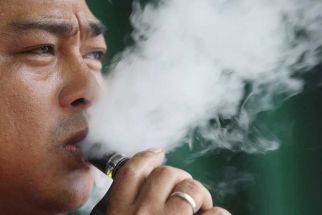Remembering government service during the Marcos years

On July 10, 1970, at a young age of 34 years as a professor at the UP School of Economics I accepted the appointment of President Ferdinand Marcos to his Cabinet as chairman of the National Economic Council, the country’s economic planning agency. I was bound (with my whole family) for a research appointment in an Ivy League university, but I chose to serve. Those were turbulent years – politically – but they were also years of great hope.
On Sept. 21, 1972, I was having breakfast with William Harding, the UNDP Resident Representative, at the Del Monte Pineapple plantation guest house in Bukidnon province. I had brought Mr. Harding to Mindanao to familiarize him on development projects where UNDP could be of help. Del Monte’s Luis Lorenzo (“Moro,” his nickname, was the famed Ateneo basketball hero), told us that martial law had been declared in the country during the night. Since all communications had suddenly disappeared, he monitored short wave broadcasts and got the news from Australia.
“Martial law.” A few days afterward, all members of the Cabinet were called to a meeting in Malacañang. In the meeting, President Ferdinand Marcos and his security and legal advisers (prominently headed by Defense Secretary Juan Ponce Enrile, General Fidel Ramos, General Fabian Ver and Justice Secretary Vicente Abad Santos) explained the rationale for martial law.
His main message was: now, it was possible to undertake major economic and social reforms that the country needed. The meeting was brief. Anyone in his official family who did not agree with his decision was free to resign.
That was when all of us in the Cabinet had the big choice. Everyone was apprehensive of the future. No one walked away from his job. Each one had welcomed the opportunity to contribute to national development in a dramatic way.
“Economic and social reforms.” The next few months and years were a whirlwind of economic and social reforms embodied in presidential decrees. Many of these were in the areas of public finance, banking, social policy, industrial and economic policy, and government reorganization. Today, many of these laws are still in effect, some amended but they are part of the country’s political and institutional framework.
These reforms touched principally with the backlog of legislative proposals that had slept for years, even decades, in Congress. The first of these was on agrarian reform, then came the various decrees governing many sectors of the economy.
As significant was the regularity with which the budget could be enacted. This allowed for a more rapid implementation of government programs. The budget was one of the most difficult pieces of legislation to pass. It involved enormous effort in Congress, a lot of horse-trading, and a lot of grandstanding by the major players, especially those in control of appropriations.
“NEDA.” After the adoption of the Constitution of 1973, President Marcos created the National Economic and Development Authority (NEDA) and appointed me to head it. I built the NEDA initially from some staff of the abolished Presidential Economic Staff (an office originally started under a separate name by President Diosdado Macapagal and which Marcos continued) and from the also abolished National Economic Council (NEC).
Then I added and trained more young staff from the best people I could get. I tackled the national office first. Later, I created and organized thirteen new regional development offices which became centers for planning to help the provinces.
“Economic shocks, crises, political shocks.” The country plunged into an economic crisis – the deepest in the nation’s history – during his incumbency. The 1970s were difficult times of world-wide economic shocks. And the 1980s, which followed, continued the tremors from these major shocks.
Even faced with these difficulties, many of the politicians who were sidelined by the declaration of martial law began to troop in and show support for the government. The private sector began to feel more comfortable about the economy’s directions. It was only after the assassination of Ninoy Aquino in 1983 that things changed dramatically.
But when Ninoy Aquino was assassinated in August 1983, the economic fundamentals fell in even greater disarray even as the country was in the process of adjusting to the impact of the debt crisis brought about by the contagion of the Mexico debt crisis of 1982. Support for Marcos in the international economic and political arena fell.
“A study of economic legacy from Marcos.” Most of the achievements in building legal and social framework as well as in undertaking public investments in infrastructure are discussed in the “Economic Legacy of Marcos,” a paper based on a seminar lecture that I delivered at the University of Asia and the Pacific in 2005. This paper was released in 2011 as a Discussion Paper and is available at the UP School of Economics internet website.
The same paper analyzed the transition period and its problems after the fall of Marcos. There were discontinuities in economic program implementation that became very costly to the nation. Decisions made by novices in government contributed to some worsened economic directions for a time.
“Legal basis of martial law.” Opponents of martial law denounce its legal basis. But it was undertaken within the constitutional framework, having been instituted under a provision of the 1935 Constitution. In a controversial decision, the Philippine Supreme Court upheld presidential action. As a leader, Marcos, ever the lawyer by professional training, made sure that his critical decisions were always on the basis of defensible legal cover.
A second phase of the martial law period was the adoption of the 1973 Constitution to replace the political framework of the government. This, too, had legal basis. This Constitution was adopted by the Constitutional Convention headed by former President Diosdado Macapagal, who saw it through during the final phase of its work.
Although aspects of the 1973 Constitution were suspended for a while, by 1981, Marcos lifted martial law. He called for elections and convened the national assembly in the form of the Batasang Pambansa. The government was a parliamentary system in which there was an elective president and a prime minister who served to run the government.
Thus, the institutional structure of the 1973 Constitution as adopted and revised was the basis of government. At that point, Philippine political institutions were similar, but not identical, to French democratic institutions.
So, when Cory Aquino challenged Marcos during the 1985 presidential election, martial law had already ended four years before.
“Lack of provision for leadership succession a mistake.” As a leader, Marcos had great focus. But he made some mistakes. His failure to provide for a transparent succession to his leadership proved his undoing. The nation had many capable rising leaders. They were all around! That would have assured the continuity of the political reforms he had instituted and strengthened democracy in the land. Instead, many of them rallied to oppose him.
“Service ended.” My service in the NEDA came to an abrupt end in mid-1981 having been fired during the Cabinet reshuffle.
- Latest
- Trending































